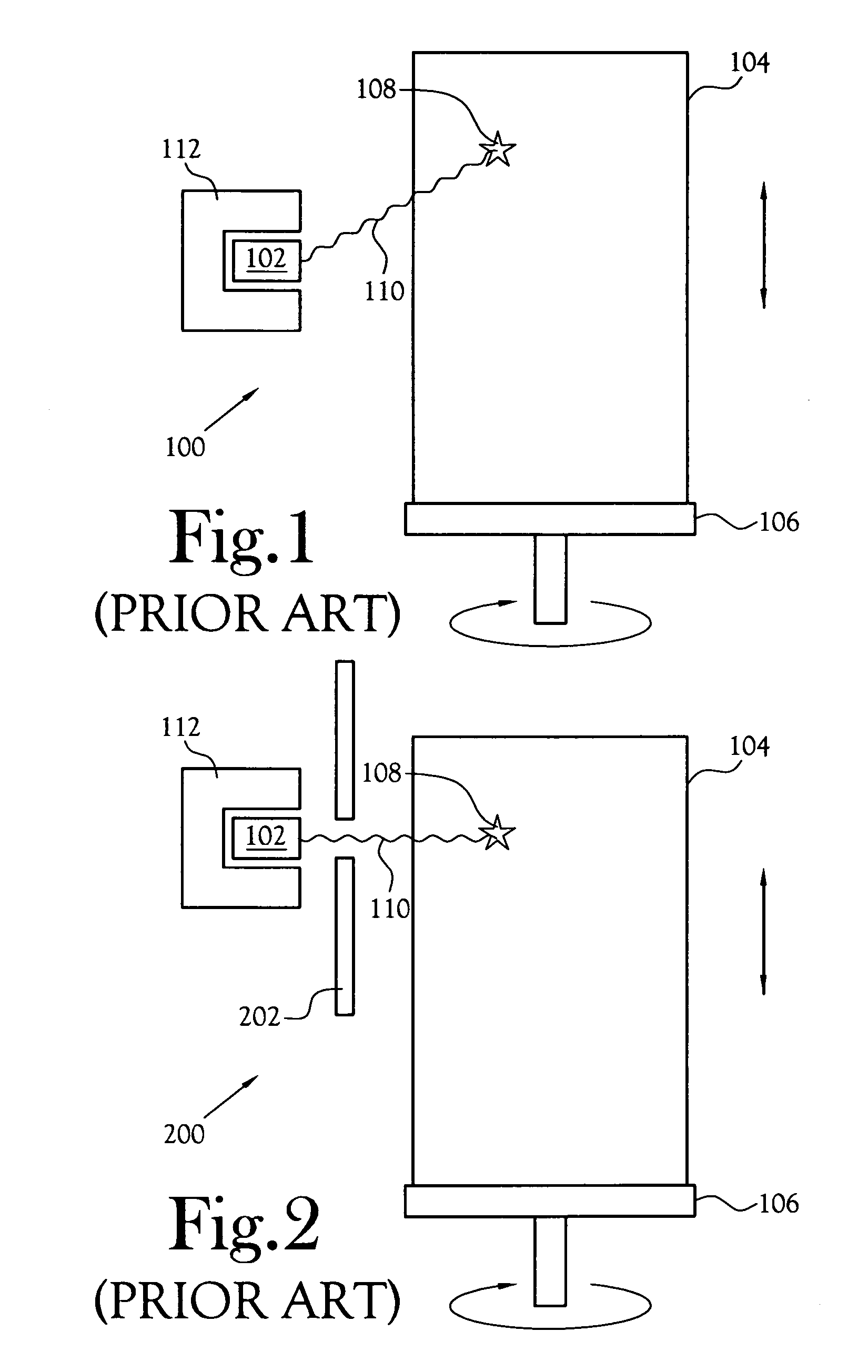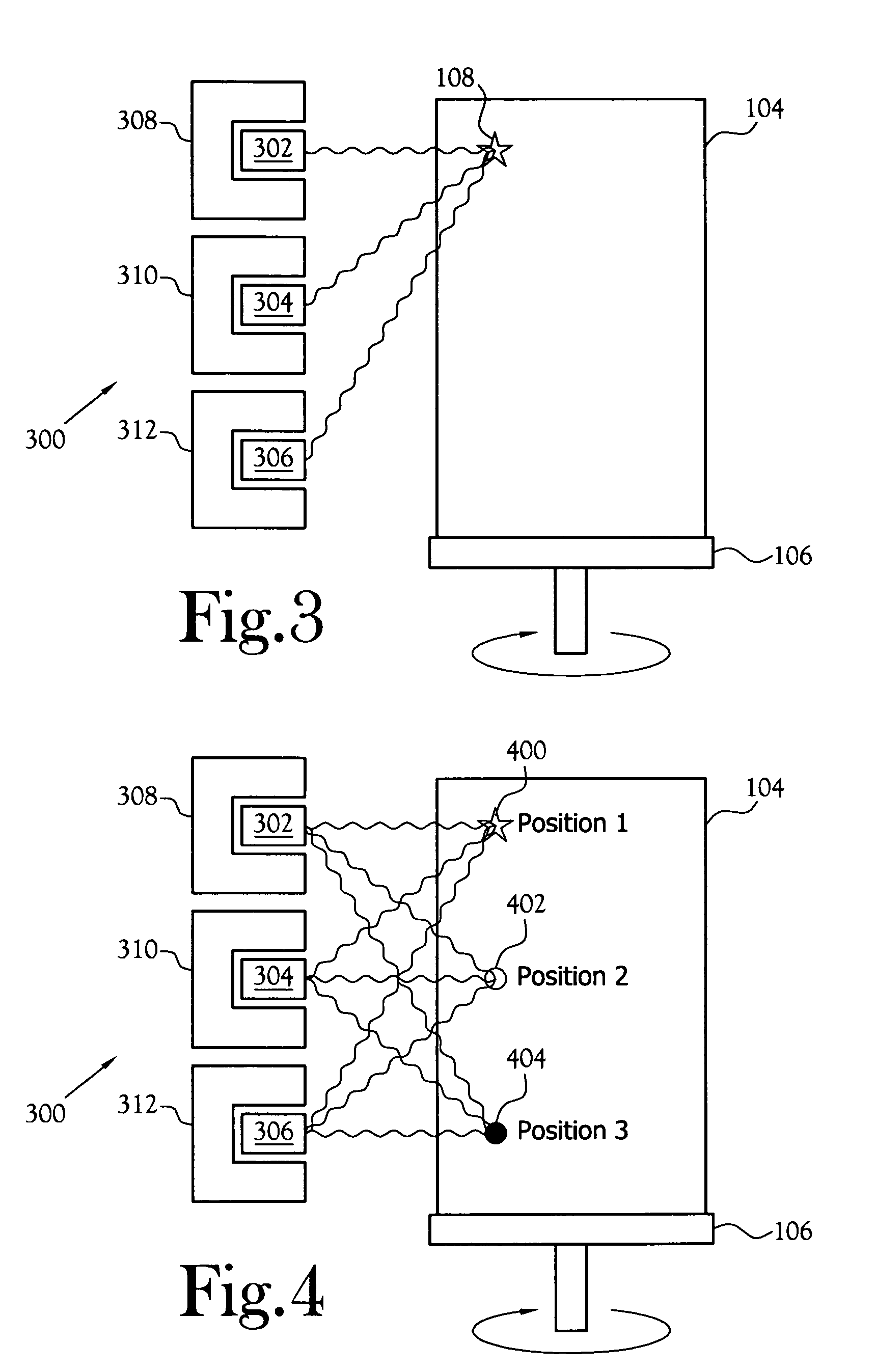Position sensitive radiation spectrometer
a radiation spectrometer and position sensitive technology, applied in the field of radiation spectrometers, can solve the problems of reducing the counting efficiency, and unable to use the scanning detector to locate the sour
- Summary
- Abstract
- Description
- Claims
- Application Information
AI Technical Summary
Problems solved by technology
Method used
Image
Examples
Embodiment Construction
[0020] A radiation spectrometer for identifying, quantifying, and locating a radioactive source in a target, or a position sensitive radiation spectrometer, is shown at 300 in the figures. The position sensitive radiation spectrometer includes an array of gamma-ray detectors arranged along one or more dimensions of a container to be assayed. A known source placed at various calibration positions is used to establish counting efficiencies at discrete gamma ray energies emitted by known isotopes of interest. From the counting efficiency and the actual count rate, the activity level of an unknown source relative to the calibration positions is calculated. The relative activity levels correlate to the position of unknown source and provide useful information about the actual distribution of radioactive material.
[0021]FIG. 1 illustrates a prior art gamma-ray spectroscopy system 100 used to measure radiation from a 55-gallon drum 104 of low-level radioactive waste. A gamma-ray detector 1...
PUM
 Login to View More
Login to View More Abstract
Description
Claims
Application Information
 Login to View More
Login to View More - R&D
- Intellectual Property
- Life Sciences
- Materials
- Tech Scout
- Unparalleled Data Quality
- Higher Quality Content
- 60% Fewer Hallucinations
Browse by: Latest US Patents, China's latest patents, Technical Efficacy Thesaurus, Application Domain, Technology Topic, Popular Technical Reports.
© 2025 PatSnap. All rights reserved.Legal|Privacy policy|Modern Slavery Act Transparency Statement|Sitemap|About US| Contact US: help@patsnap.com



